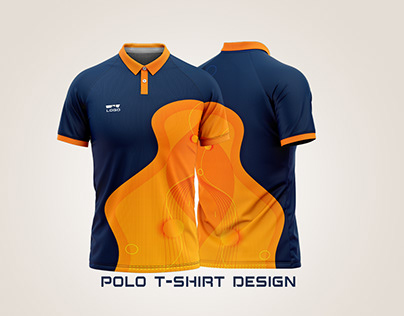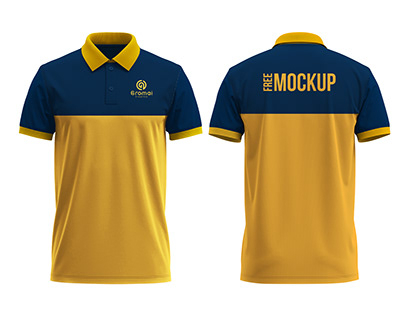The humble polo shirt. It’s more than just a piece of clothing; it’s a versatile icon, a bridge between casual comfort and smart sophistication. From the tennis courts to corporate events, and from leisurely weekend wear to essential work uniforms, the polo shirt holds a cherished place in the UK wardrobe. But what goes into crafting a truly outstanding polo shirt, one that perfectly captures your brand's essence or personal style, especially with the unique demands and tastes of the British market in mind?
Designing a polo shirt isn't just about slapping a logo on it. It's an art and a science, requiring careful consideration of fabric, fit, features, and finesse. In this comprehensive guide, we'll delve into the myriad of design elements – we've identified at least 28 key considerations – that can transform a standard polo into a statement piece, tailored specifically for the discerning UK audience.
Why the Polo Shirt Endures in the UK?
Before we dive into the design specifics, it's worth understanding the polo shirt's enduring appeal in the UK. Its unique blend of smart-casual makes it incredibly adaptable. It offers more polish than a t-shirt but is less formal than a button-down shirt. This versatility makes it a go-to choice for a wide range of scenarios: from staff uniforms in retail and hospitality, team kits for local sports clubs, merchandise for events, to everyday fashion for individuals who appreciate comfort without compromising on style. The British weather, often unpredictable, also plays a role; a good polo can be layered easily or worn on its own during milder days, making it a practical choice year-round.
The Foundation: Choosing Your Polo Shirt Blank
Every great design starts with a solid foundation. The quality and characteristics of the base polo shirt are paramount.
Material Matters
The fabric you choose significantly impacts the polo's look, feel, and performance. In the UK, comfort and durability are key.
Piqué Cotton: This is the classic choice, known for its distinctive textured, waffle-like weave. It's breathable, durable, and offers a traditional, smart appearance. Ideal for corporate wear and classic leisurewear.
Jersey Cotton: Softer and smoother than piqué, jersey offers a more casual, t-shirt-like feel. It drapes well and is incredibly comfortable, often preferred for fashion-forward or softer-touch polos.
Performance Fabrics: For sports teams, activewear, or roles requiring high mobility and moisture management, technical fabrics like polyester blends are essential. These often feature wicking properties to keep the wearer dry and comfortable, a big plus for outdoor events or active roles in the UK.
Organic/Recycled Cotton: With increasing emphasis on sustainability in the UK, choosing eco-friendly materials can significantly enhance your polo's appeal and brand message.
Fit and Cut
The silhouette of the polo can dramatically alter its overall aesthetic.
Classic/Regular Fit: A more relaxed, generous cut that offers maximum comfort and freedom of movement. A timeless choice, particularly for uniforms or broader appeal.
Slim/Tailored Fit: A more contemporary, body-hugging cut that creates a sharper, more modern silhouette. Popular in fashion retail and for a more polished look.
Women's Specific Cuts: Designed to flatter the female form, these often feature a tapered waist, shorter sleeves, and a slightly different placket.
Colour Palette
Colour speaks volumes. Consider your brand identity, target audience, and current UK fashion trends. Classic colours like navy, black, white, and grey are always safe bets, but don't shy away from vibrant hues for sports teams or seasonal collections. Corporate colours are, of course, essential for branded wear.
28 Design Elements to Elevate Your UK Polo Shirt
Now, let's get into the nitty-gritty of design. These are the details that truly differentiate a polo shirt and make it memorable.
Branding and Logo Placement
Beyond the standard left chest, there are numerous ways to incorporate your brand.
Left Chest Embroidery: The quintessential choice, timeless and professional.
Right Chest Embroidery: A less common but equally effective spot for secondary branding or a smaller logo.
Sleeve Embroidery/Patch: Ideal for team numbers, flags, or additional brand elements.
Back of Collar Logo: A subtle yet sophisticated placement for a small logo or icon.
Large Back Print/Embroidery: For maximum visibility, especially for events or team identification.
Subtle Hem Tag: A small, woven label at the bottom hem, a hallmark of quality and attention to detail.
Woven Neck Label: Custom branding inside the collar adds a premium touch.
Appliqué Logo: A fabric cut-out stitched onto the polo, offering a textured, high-end finish.
Silicone Badge: Modern and tactile, offering a different dimension to traditional embroidery.
Debossed/Embossed Logo: If the fabric allows, this creates a subtle, sophisticated texture.
Collar and Placket Details
These elements are central to the polo's character.
Contrast Tipping on Collar: A thin stripe of contrasting colour along the collar edge, a classic sportswear detail.
Solid Contrast Collar: A collar in a completely different colour than the body, making a bold statement.
Hidden Placket: Buttons are concealed, creating a sleek, minimalist look.
Three-Button Placket: The most common and versatile choice.
Two-Button Placket: Offers a slightly more open, casual feel.
Four-Button Placket: Adds a touch of formality and unique styling.
Custom Branded Buttons: Small details like engraved or dyed-to-match buttons elevate the quality.
Herringbone Tape Inside Placket: A subtle yet premium detail that adds comfort and style.
Different Collar Fabric: For example, a jersey collar on a piqué body for a softer feel.
Sleeve and Cuff Innovations
Don't overlook the sleeves; they offer further customisation opportunities.
Ribbed Cuffs: The traditional choice, providing a snug, neat fit.
Open Hem Sleeves: A more relaxed, t-shirt-like finish, often preferred for a casual look.
Contrast Tipping on Cuffs: Similar to the collar, this adds a pop of colour and design cohesion.
Sleeve Length Options: Offering slightly longer or shorter sleeves can cater to different preferences or seasons.
Hem and Side Vent Customisation
The bottom of the polo also contributes to its overall design.
Side Vents with Contrast Tape: Small slits at the side seams, often reinforced with contrasting fabric, allowing for greater movement and a stylish detail.
Stepped Hem (Tennis Tail): A classic design where the back hem is slightly longer than the front, designed to stay tucked in during activity.
Straight Hem: A uniform length all around, suitable for a more modern, untucked look.
Unique Embellishments and Features
These are the finishing touches that can make your polo truly stand out.
Contrast Stitching: Using a thread colour that stands out against the fabric for a subtle design accent.
Pocket Addition: A single chest pocket adds functionality and a distinct aesthetic, popular for workwear.
Fabric Texture Variations: Subtle patterns woven into the fabric itself, like mini-stripes or subtle jacquard designs.
Reflective Details: For safety in low light, especially relevant for uniforms or activewear.
Internal Neck Print: Instead of a woven label, printing brand information directly onto the fabric for ultimate comfort.
Custom Hang Tags: An often-overlooked opportunity for branding and conveying product information.
UK Heritage Elements: Incorporating subtle nods to British design, like a hint of tartan in the placket lining or specific colour combinations.
Eco-Friendly Messaging: Using a tag or print to highlight sustainable materials or manufacturing processes, resonating with environmentally conscious UK consumers.
Bringing Your Vision to Life: The UK Manufacturing Landscape
Once your design elements are chosen, partnering with a reliable UK-based manufacturer or supplier can ensure quality and efficiency. Local production often means better communication, faster turnaround times, and the ability to maintain higher quality control standards, which are highly valued in the British market. Many UK suppliers also offer expertise in sustainable practices and ethical sourcing, aligning with modern consumer values.
In conclusion, designing a polo shirt for the UK market is an exciting endeavour that offers a wealth of creative possibilities. By carefully considering these 28+ design elements, from the fundamental fabric choice and fit to intricate branding and unique embellishments, you can create a polo shirt that not only looks fantastic but also perfectly serves its purpose, resonates with its audience, and stands the test of time.
***
This article explored the comprehensive process of designing a polo shirt for the UK market, detailing its enduring popularity and versatility. It covered foundational aspects like material choice (piqué, jersey, performance fabrics), fit (classic, slim), and colour palettes. The core of the article highlighted over 28 distinct design considerations, categorised into branding and logo placement, collar and placket details, sleeve and cuff innovations, hem and side vent customisation, and unique embellishments and features, including UK-specific elements. Finally, it touched upon the benefits of leveraging the UK manufacturing landscape to bring these designs to fruition, emphasising quality and sustainability.




